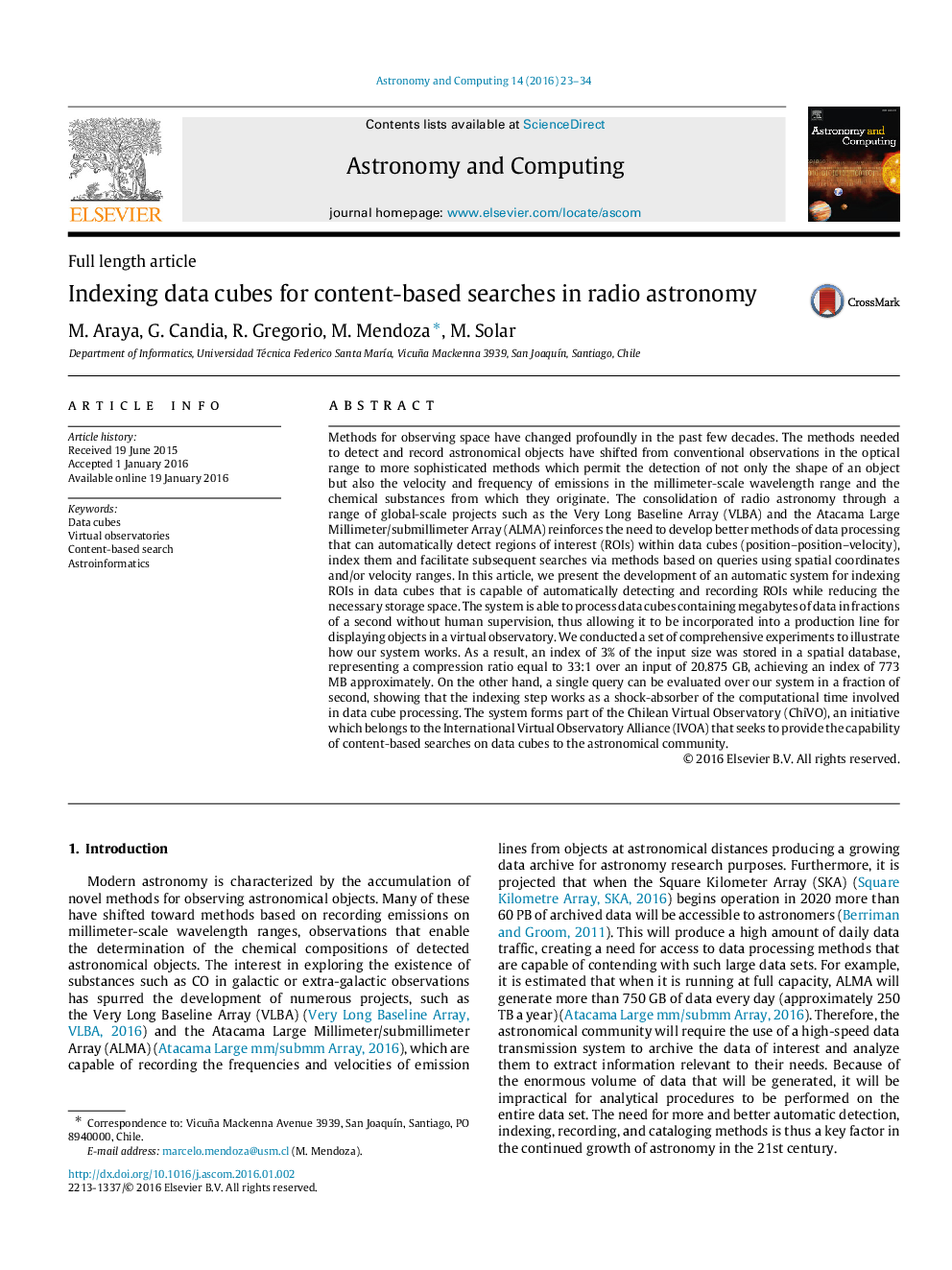| کد مقاله | کد نشریه | سال انتشار | مقاله انگلیسی | نسخه تمام متن |
|---|---|---|---|---|
| 497517 | 862910 | 2016 | 12 صفحه PDF | دانلود رایگان |
Methods for observing space have changed profoundly in the past few decades. The methods needed to detect and record astronomical objects have shifted from conventional observations in the optical range to more sophisticated methods which permit the detection of not only the shape of an object but also the velocity and frequency of emissions in the millimeter-scale wavelength range and the chemical substances from which they originate. The consolidation of radio astronomy through a range of global-scale projects such as the Very Long Baseline Array (VLBA) and the Atacama Large Millimeter/submillimeter Array (ALMA) reinforces the need to develop better methods of data processing that can automatically detect regions of interest (ROIs) within data cubes (position–position–velocity), index them and facilitate subsequent searches via methods based on queries using spatial coordinates and/or velocity ranges. In this article, we present the development of an automatic system for indexing ROIs in data cubes that is capable of automatically detecting and recording ROIs while reducing the necessary storage space. The system is able to process data cubes containing megabytes of data in fractions of a second without human supervision, thus allowing it to be incorporated into a production line for displaying objects in a virtual observatory. We conducted a set of comprehensive experiments to illustrate how our system works. As a result, an index of 3% of the input size was stored in a spatial database, representing a compression ratio equal to 33:1 over an input of 20.875 GB, achieving an index of 773 MB approximately. On the other hand, a single query can be evaluated over our system in a fraction of second, showing that the indexing step works as a shock-absorber of the computational time involved in data cube processing. The system forms part of the Chilean Virtual Observatory (ChiVO), an initiative which belongs to the International Virtual Observatory Alliance (IVOA) that seeks to provide the capability of content-based searches on data cubes to the astronomical community.
Journal: Astronomy and Computing - Volume 14, January 2016, Pages 23–34
